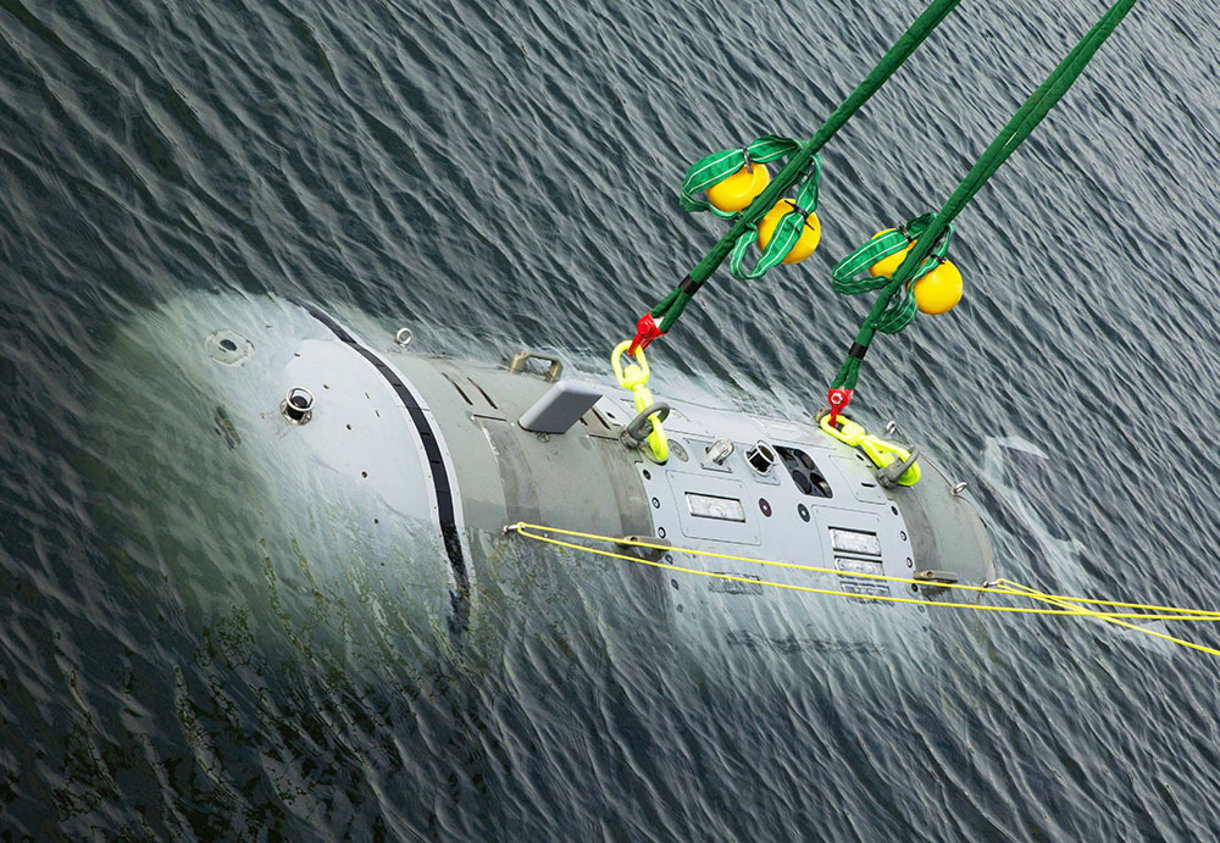La US Navy ensaya su nuevo sistema LDUUV (Large Displacement Unmanned Underwater Vehicle), el sistema autónomo para ser lanzado desde submarino de mayor tamaño, carga útil y mejores prestaciones operativas hasta ahora conocido. Su principal misión es el apoyo directo a las unidades submarinas de esa flota, mediante la exploración y construcción de “mapas submarinos”, que permitan a las unidades maniobrar de manera segura en su zona de operaciones, identificando riesgos y amenazas potenciales. Posee además capacidades de empleo para la detección de zonas minadas y acciones de guerra electrónica (EW) en ámbito marítimo. Ha realizado misiones de hasta 78 horas de duración.
The US Navy last month demonstrated the Intelligence Readiness Operating Environment (IPOE) mission with a prototype of the Snakehead Large Displacement Unmanned Underwater Vehicle (LDUUV).As per Naval Sea Systems Command (NAVSEA).
The IPOE mission is an essential requirement for understanding an area of interest on the basis of which a relevant action is planned to support the warship.
Includes the construction of Detailed maps of the ocean floor and identification of hazards or other objects of interestThe knowledge of which is necessary for a submarine to enter or leave a given area without being detected.
A team performed from the Naval Undersea Warfare Center (NUWC) Newport Division at the Narragansett Bay Test Facility on 21 July.
The underwater drone conducted a “long-range entry” (long-range entry into the area of interest), performed a sonar reconnaissance box, and then returned (exited) to the test facility, “an overall The new milestone demonstrates “output power,” NAVSEA said.
Output was performed using “Open Maritime Architecture Autonomy Developed by Draper Laboratory” and sonar data collection technology provided by Pennsylvania State University Applied Research Laboratory.
“Performing this mission in the system’s intended operating environment was a major step for the program to gain confidence in the vehicle’s software and hardware systems as the team moves toward expanded endurance operations and the layering of additional systems capability,” said Chris Delmastro , said the head of the Underwater Warfare Platforms and Payload Integration Department.
l lduuv snakehead
Snakehead is a modular, reconfigurable, multi-mission LDUUV that can be deployed from submarines and surface ships. It provides guidance and control, navigation, situational awareness, propulsion, maneuver and sensors to support the IPOE mission.
The unmanned underwater vehicle incorporates several innovative technologies, such as fault-tolerant lithium-ion (LiFT) batteries, advanced hull and sensor materials, and launch and recovery from submarines and surface ships.
Similar in size to a Sealed Delivery Vehicle (SDV), Snakehead is the largest US Navy submarine-launched UUVWith a higher payload capacity than small and medium UUVs.
In addition to the IPOE missions, LDUUV will also be used for Mine Countermeasures and Electronic Warfare (EW) missions, as previously reported in the Eurasian Times that it will be equipped with an Electronic Support Measures (ESM) system that will be equipped with LDUUV. will be allowed to collect. Information from the adversary’s radar and communication nodes.
So far, Snakehead has made 155 starts on the water and operated for over 78 hoursCommand, Control and Communications (C3) software is an open, government-controlled, modular system architecture for mission planning, operations, and analysis.
Prior to the recent test, LDUUV went through 190 hours of hardware and software simulations to ensure the accuracy of mission parameters set by the vehicle.
US Navy UUV’s . makes a family of
The US Navy is actively investing in UUV capabilities to maintain superiority in the submarine domain.
The service aims to create a family of UUVs, operating on a variety of platforms, such as L’Orca XL UUV (XLUUV) And this Lionfish Small YUV,
Developed by Boeing, the Orca XLUUV will initially focus on Concept of Operations (CONOPS) development, payload integration work and mine warfare (MIW).
In the future, Orca Mine will perform Countermeasures (MCM), Anti-Submarine Warfare (ASW), Electronic Warfare (EW), Anti-Surface Warfare (ASUW), Intelligence and Surveillance, Reconnaissance (ISR) and even Strike missions. could. ,
The Lionfish Small UUV program includes Huntington Ingalls Industries’ Remus 300 drone, which is designed to advance the concept of “distributed maritime operations” by performing critical underwater missions.
China also works on UUVs
Navies of many countries are trying to induct UUVs as they try to protect their personnel from risky environments. UUVs can dive deeper and stay underwater for longerWhich allows us to get useful information in real time without the need for much human intervention.
Similarly, China, which has historically been very poor in submarine warfare due to its noisy submarines and lack of experience in hunting enemy submarines, Prioritizing UUVs to achieve underwater excellence,
China’s UUV program came to light in October 2019 when the People’s Liberation Army (PLA) Navy unveiled two large UUVs.HSU001During the 70th anniversary parade of the EPL.
Like the US Navy Snakehead, the HSU001 is also designed for IPOE and anti-submarine warfare. Its shape is said to resemble the Soviet Oscar-class nuclear submarine (Type 949).
It looks like the HSU001 also features the German UUV design and the Russian harpsichord UUV.
Apparently the HSU001 has some problems with the power supply, which it tries to compensate for by emphasizing “sea level warfare”, which means that The vehicle can remain at sea level for up to 30 days and cannot be detected by passively observing the environment,
Reports suggest that HSU001 provides the PLA with intelligence gathering capabilities that extend to the 1st and 2nd island chains.
Fuente: https://nationworldnews.com


